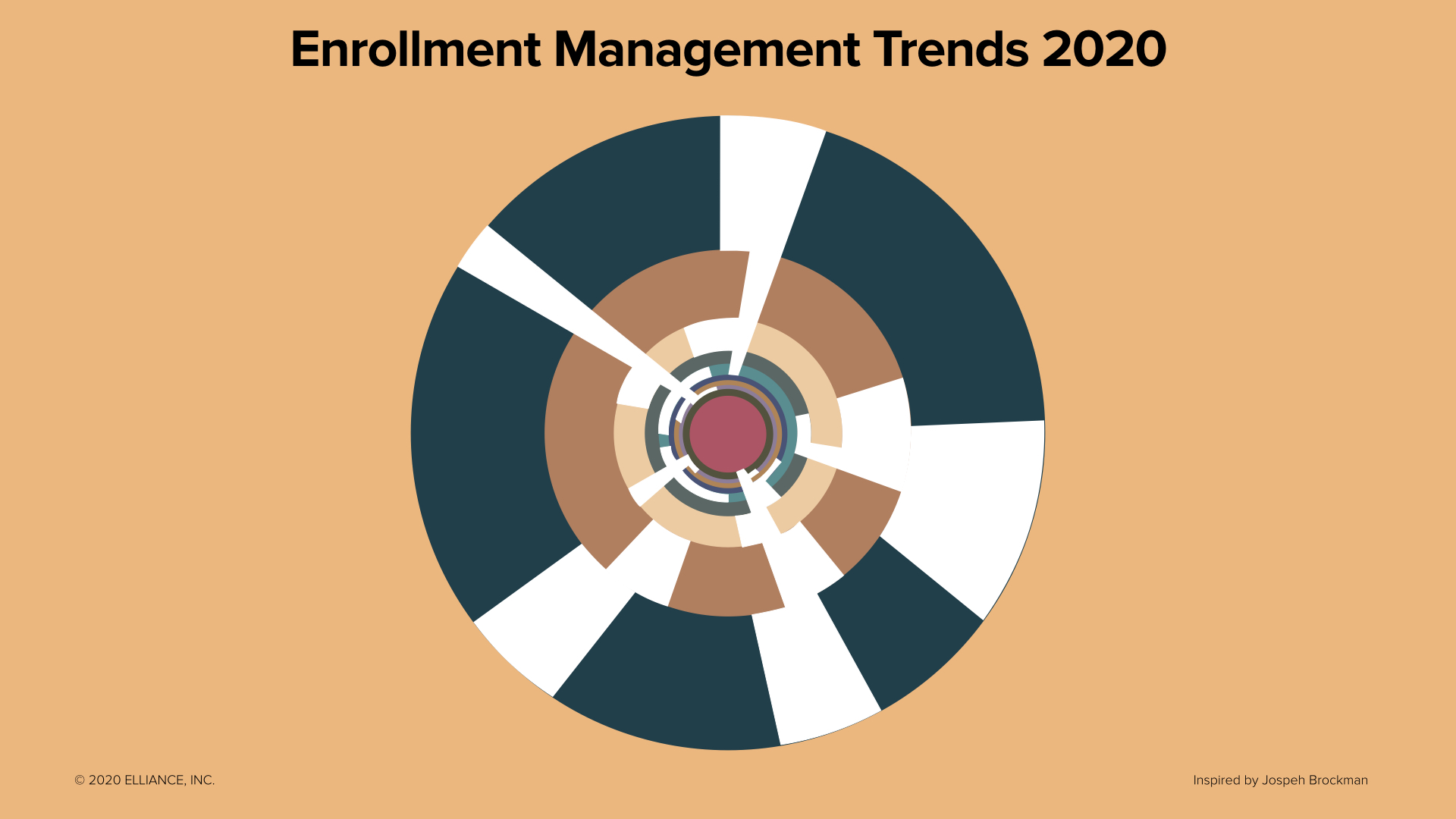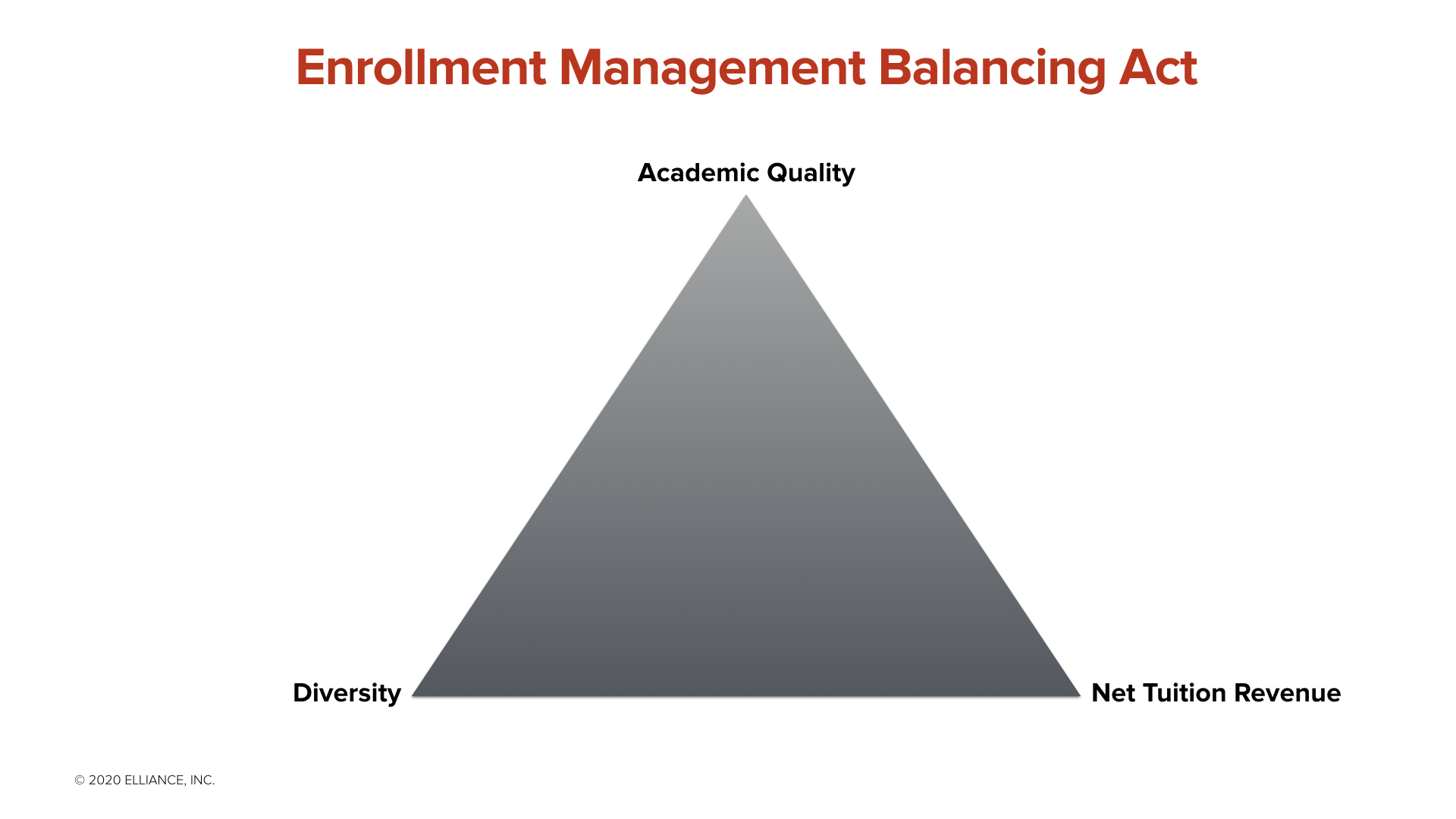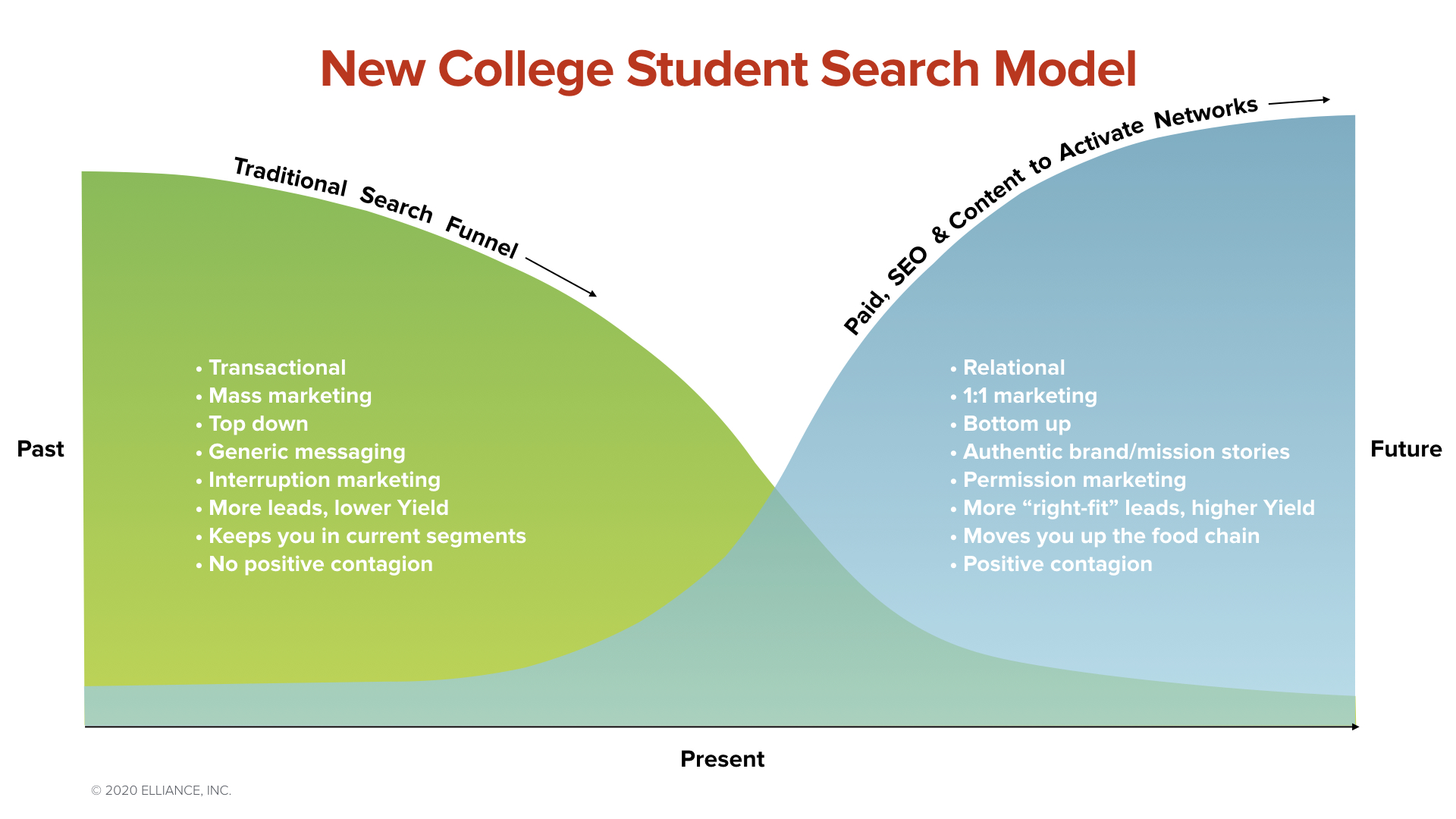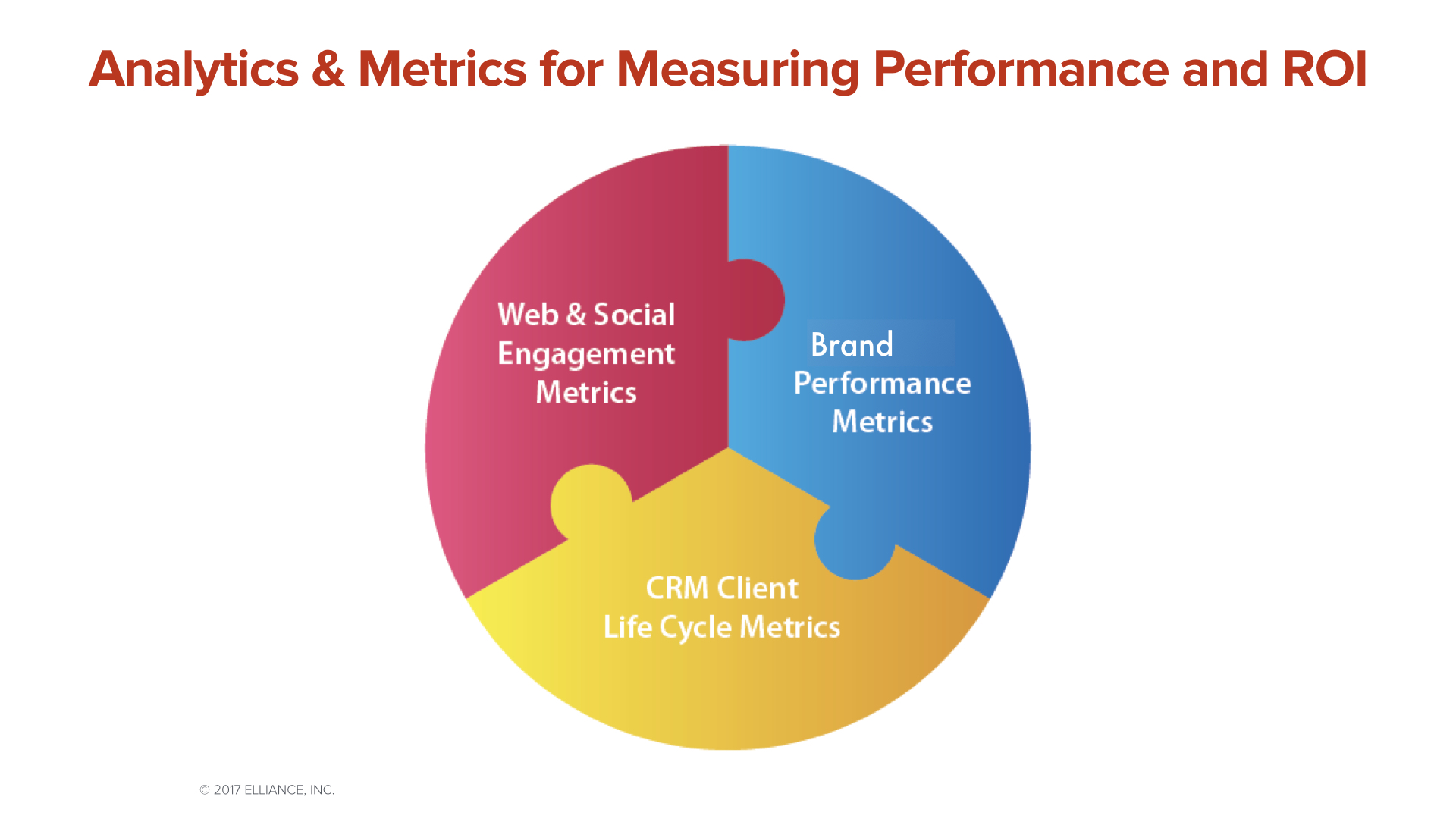| Mar 16, 2020
10 Enrollment Management Trends for 2020
In 2020, higher education marketers are battling to win an outsized share of a shrinking pool of domestic and international students. Future students are expected to be more racially and ethnically diverse than ever before. Increased marketing funding by for-profit colleges and some large public universities has unleashed a marketing arms race. Workforce preparation for non-traditional students has been thrown into the product/revenue mix. Students and families are expecting to receive larger scholarships.
To offset these, here are the 10 innovative responses by enrollment managers that we are seeing:
1. Supporting Diverse Student Populations
Racial, ethnic, gender and age diversity are all on the rise in colleges and universities. Enrollment managers are catering to the needs of these audience.
Enrollment managers are infusing signals of diversity in every digital touch point including websites, social media channels, search engine meta-descriptions, paid campaigns and brand anthem videos.
They are hiring admissions counselors and faculty from diverse backgrounds, fostering creation of clubs and organizations for diverse student populations, and providing other support services for these student populations.
2. New Student Search Models
Enrollment managers have started abandoning traditional student search models. They have come to recognize that the era of buying prospects names, spamming them, seeing who sticks and praying that some convert is over. They are embracing new big-data, algorithmic methodologies based on:
- right-fit
- micro-targeting
- look-alike audiences
- machine learning
- big-data algorithms
- affinity groups
The goal of these tactics is to invert the admissions funnel by promoting their students and alumni heroes to attract like-minded prospects. Enrollment managers are trying to create admission pipes, not funnels because like-minded prospects are three times more likely to convert than paid advertising leads, which in turn are three times more likely to convert than purchased names.
3. Marketing to Teachers, College Counselors, and Parents
To generate wholesale student streams, enrollment managers are embracing influencers such as parents, teachers, college counselors, high school principals, and community leaders.
4. Admissions Microsites
The argument for “why consider us” is usually distributed across dozens of website pages. To distill this argument, colleges are increasingly creating admissions microsites. Two example include admissions.princeton.edu and apply.jhu.edu.
5. Merchandising Star Programs
In accordance with the mantra of “Leading with strengths”, enrollment managers are betting on program champions and star programs. They are counting on their star programs to generate revenue to sustain non-distinctive programs.
6. Always-On Marketing
Enrollment managers realize that once a student submits an application, their marketing efforts must be ramped up to woo each student to enroll. Once the students are accepted, they must pay as much attention to follow-up and yield communications as they do to lead-generation and lead-nurturing.
Once the students arrive on campus, colleges are investing in student retention and student engagement programs to prevent first year melt and second year transfers.
Some schools are also offering graduate-in-four-years guarantee (e.g. Randolph-Macon College), a job guarantee (e.g. Capitol Technology University) or a tuition lock. Parents and students are attracted to colleges willing to stand behind their commitments.
7. Conversation Marketing
- Turning brand Ambassadors into brand evangelists on social media
- Transforming social media influencers into brand champions
- Allowing student ambassadors to takeover of college social media accounts for a day or a week
- Creating user-generated content with hashtag campaigns
8. High-Fidelity Content Marketing Powered by Keyword Guide
Enrollment Managers are creating their Keyword Guides comprised of the keywords and key phrases they want to claim. Categories in the lexicon include program keywords, brand positioning keywords, reputation keywords, decisioning keywords and location keywords.
Program pages are the “money pages” on a website and are used by value-minded prospects to make their college choices. Informed by the Keyword Guide, Enrollment Managers are building them with the right balance of persuasion, argument construction and beauty.
Also, as more marketers have started creating fresh content, enrollment managers are realizing they must up their game and start producing high-fidelity content. They are promoting this content through college’s earned, owned and paid media with the goal of reaching new prospect pools, fostering peer-to-peer sharing, and claiming thought leadership. Done well, the high-fidelity content elevates brand reputation and dislodges competitors from search engines for tough-to-rank keywords.
9. People, Process and Technology
Enrollment Managers are testing new tools such as:
- chat bots
- live streaming
- personalization
- brand sentiment analysis
- algorithmic micro-segmentation
- predictive enrollment
- A/B testing
- CRM systems
- marketing automation software
However, in doing so, they aim to maintain the humanity in their creative and personal interactions. They know that to win the hearts and minds of prospects, relationship building must be done one person at a time.
They deploy processes, but remember that imagination, passion and purpose — not process — is what prospects ultimately buy and are buying into.
10. Data-Informed Decision Making
Enrollment Managers are embracing data-informed decision making and measuring what matters.
- For Enrollment: They know and benchmark their admission funnels, cost-per-enroll, conversion-rates, yield rates, retention rates, graduation rates, placement rates and return-on-investment.
- For Websites: They are tracking bounce rates, scroll rates for longer web pages, request info/visit/apply conversion rates, funnel melt rates, giving rates, keyword rankings and visitor/sources trends.
- For Brand: They are monitoring their brand strength, brand sentiments, and brand reach — with both brand-aware and non-brand-aware audiences.
They are measuring only what matters, connecting the dots between the seen and the unseen.
Innovative enrollment managers are tweaking their strategies to adapt to changing demographics and social habits. They are harnessing data to make more intelligent data-informed decisions to give themselves an edge in a competitive environment.
If you are seeking enrollment marketing agency to fortify the reputation of your college or university, view our higher education marketing capabilities and consider partnering with us.





